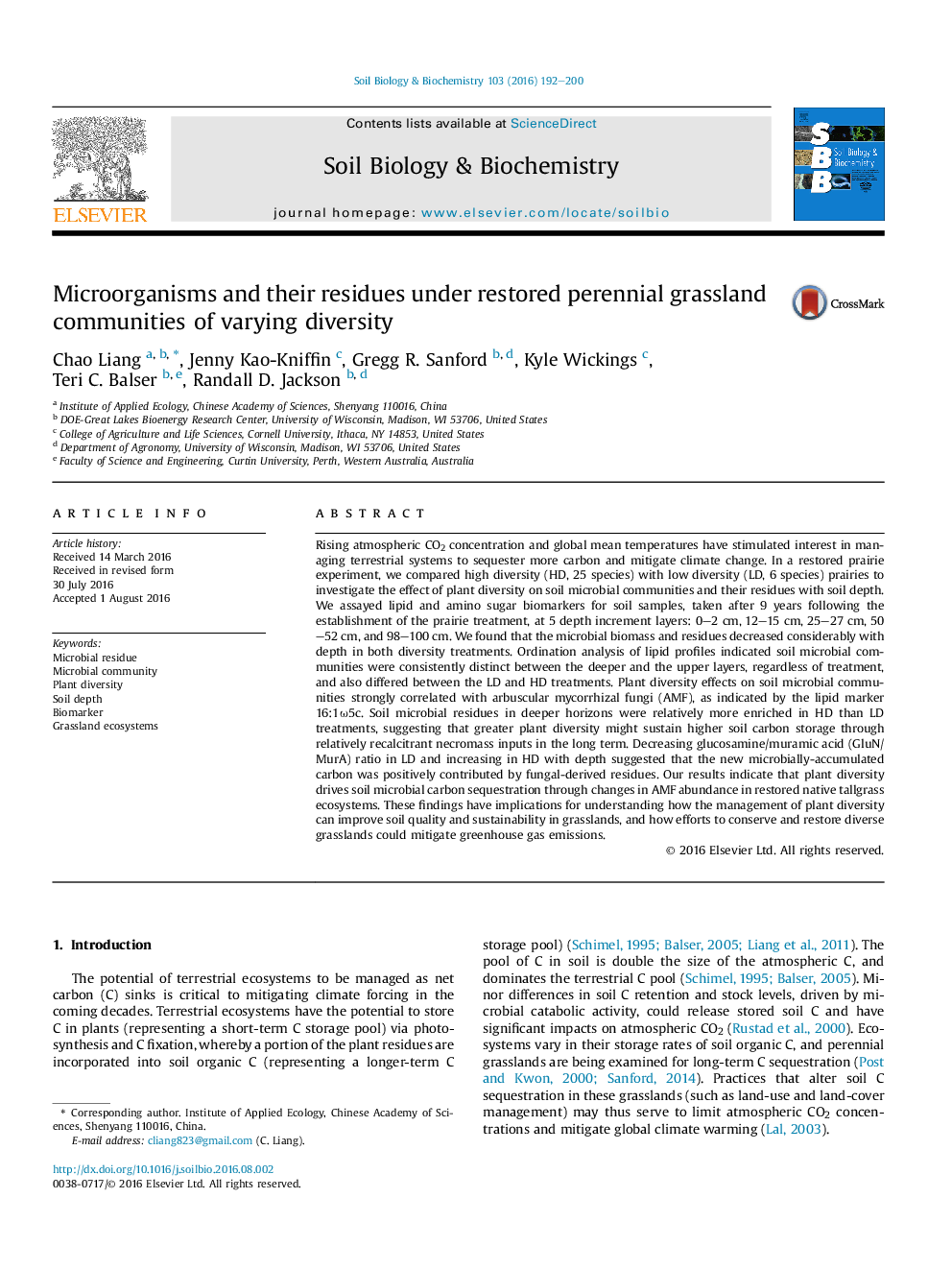| کد مقاله | کد نشریه | سال انتشار | مقاله انگلیسی | نسخه تمام متن |
|---|---|---|---|---|
| 8363233 | 1542581 | 2016 | 9 صفحه PDF | دانلود رایگان |
عنوان انگلیسی مقاله ISI
Microorganisms and their residues under restored perennial grassland communities of varying diversity
ترجمه فارسی عنوان
میکروارگانیسم ها و بقایای آنها تحت جوامع گندم چند ساله ای که تنوع متنوعی دارند، بازسازی شده است
دانلود مقاله + سفارش ترجمه
دانلود مقاله ISI انگلیسی
رایگان برای ایرانیان
کلمات کلیدی
باقی مانده های میکروبی، جامعه میکروبی، تنوع گیاهی، عمق خاک، بیومارکر، اکوسیستم های چمنزار،
موضوعات مرتبط
علوم زیستی و بیوفناوری
علوم کشاورزی و بیولوژیک
دانش خاک شناسی
چکیده انگلیسی
Rising atmospheric CO2 concentration and global mean temperatures have stimulated interest in managing terrestrial systems to sequester more carbon and mitigate climate change. In a restored prairie experiment, we compared high diversity (HD, 25 species) with low diversity (LD, 6 species) prairies to investigate the effect of plant diversity on soil microbial communities and their residues with soil depth. We assayed lipid and amino sugar biomarkers for soil samples, taken after 9 years following the establishment of the prairie treatment, at 5 depth increment layers: 0-2Â cm, 12-15Â cm, 25-27Â cm, 50-52Â cm, and 98-100Â cm. We found that the microbial biomass and residues decreased considerably with depth in both diversity treatments. Ordination analysis of lipid profiles indicated soil microbial communities were consistently distinct between the deeper and the upper layers, regardless of treatment, and also differed between the LD and HD treatments. Plant diversity effects on soil microbial communities strongly correlated with arbuscular mycorrhizal fungi (AMF), as indicated by the lipid marker 16:1Ï5c. Soil microbial residues in deeper horizons were relatively more enriched in HD than LD treatments, suggesting that greater plant diversity might sustain higher soil carbon storage through relatively recalcitrant necromass inputs in the long term. Decreasing glucosamine/muramic acid (GluN/MurA) ratio in LD and increasing in HD with depth suggested that the new microbially-accumulated carbon was positively contributed by fungal-derived residues. Our results indicate that plant diversity drives soil microbial carbon sequestration through changes in AMF abundance in restored native tallgrass ecosystems. These findings have implications for understanding how the management of plant diversity can improve soil quality and sustainability in grasslands, and how efforts to conserve and restore diverse grasslands could mitigate greenhouse gas emissions.
ناشر
Database: Elsevier - ScienceDirect (ساینس دایرکت)
Journal: Soil Biology and Biochemistry - Volume 103, December 2016, Pages 192-200
Journal: Soil Biology and Biochemistry - Volume 103, December 2016, Pages 192-200
نویسندگان
Chao Liang, Jenny Kao-Kniffin, Gregg R. Sanford, Kyle Wickings, Teri C. Balser, Randall D. Jackson,
